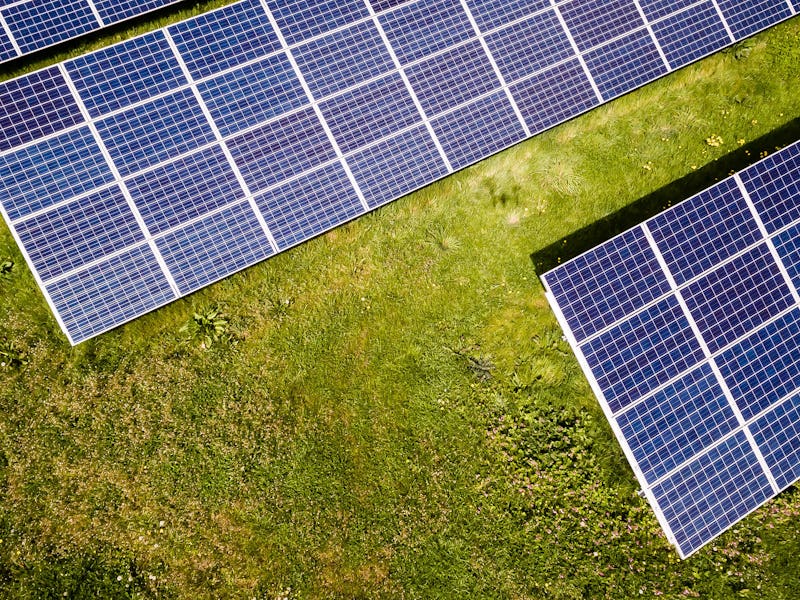Solar Energy Prices Hit Tipping Point as China Reaches "Grid Parity"
It's a landmark moment for China and the world.

The world’s most populous country has reached a tipping point in the pursuit of renewable energy.
China, which aims to consume 20 percent of its energy from non-fossil fuels by 2030, has reached a point where home-generated solar is cheaper than electricity generated from the national grid. The research, conducted by researchers in both Sweden and China and published in the journal Nature Monday, mark an historic moment in the drive to ditch fossil fuels.
The switchover point comes soon after a report that showed a similar crossover in the United States. The report in March showed that in 74 percent of cases, building new solar and wind capacity in a given area was cheaper than maintaining an existing coal-powered plant. Where levelized costs for wind reach $15 per megawatt-hour and $28 per megawatt-hour for solar, marginal costs for existing plants can jump as high as $104 per megawatt-hour.
As the price of renewables decreases, a global trend is emerging where burning fossil fuels and polluting the planet makes less and less sense from an economic perspective.
A fossil fuel pump: technology of the past?
China and Solar Energy: How It’s Fast Becoming a Renewables Superpower
China will be critical to efforts to resolve the climate emergency. The country ranks as the world’s biggest polluter, accounting for 28 percent of all emissions from fuel combustion. The country is home to just over 18 percent of the world’s population.
The global emissions output.
However, it’s making a big drive toward renewable energy. It’s set to become the world’s largest producer of offshore wind energy, and its plans for a space-based solar farm show plans to innovate in the sector.
“No country has put itself in a better position to become the world’s renewable energy superpower than China,” a report from the International Renewable Energy Agency in January declared.
The contradictions between being the king of pollution and renewables have caused problems, though — a report earlier this month showed that the high levels of pollution have caused solar power output to fall up to 15 percent.
“The choice it makes between the technology of the past versus the future will have a lasting effect on the world’s ability to limit warming to 1.5C,” declares the Climate Action Tracker, an independent analysis produced by three organizations.
Solar panels.
China and Solar Energy: Reaching a ‘Tipping Point’
The researchers were interested in discovering whether China had reached a tipping point, difficult to quantify as local factors can dramatically affect prices. The team looked at all 344 prefectures and analyzed the cost of solar in each, looking at the costs and profits of maintaining a solar array over its lifespan and comparing it to the price of electricity from the grid.
The findings mark a breakthrough in China’s goals to reduce dependence on fossil fuels. Every single prefecture analyzed could reach lower solar energy prices than buying from the grid — without any subsidies.
The findings also found that, in 22 percent of cases, the solar prices could compete with the benchmark electricity price of desulfurized coal. These benchmarks are published by the National Development and Reform Commission to affect the end-user price of electricity. They’re adjusted by provincial governments on a case-by-case basis and tweaked to reflect a number of factors, before emerging as the price the end-user pays.
The difference between the coal benchmark and the price of solar has been a sore point in the past before, as officials announced in January 2019 that they would refuse permission to projects that didn’t prove cost-effective. A 500-megawatts system installed in December 2018 managed to meet this criteria.
The journal Nature, which published the report, praised the findings in a Tuesday editorial:
This grid parity is a critical milestone made even more remarkable by the fact that the solar electricity costs estimated by the researchers do not include subsidies. Doubtless these prices will continue to vary in the near future — depending on national and international policy — but the trend is downwards and continuing. Grid parity provides the economic incentive for domestic consumers to buy into solar home systems and signals a potentially massive uptake of the technology in households in the near future.
As global temperatures continue to increase on average, China’s role as one of the key players in renewables could prove critical to the future success of efforts to ditch fossil fuels.
Read the abstract below:
In recent years, China has become not just a large producer but a major market for solar photovoltaics (PV), increasing interest in solar electricity prices in China. The cost of solar PV electricity generation is affected by many local factors, making it a challenge to understand whether China has reached the threshold at which a grid-connected solar PV system supplies electricity to the end user at the same price as grid-supplied power or the price of desulfurized coal electricity, or even lower. Here, we analyse the net costs and net profits associated with building and operating a distributed solar PV project over its lifetime, taking into consideration total project investments, electricity outputs and trading prices in 344 prefecture-level Chinese cities. We reveal that all of these cities can achieve—without subsidies—solar PV electricity prices lower than grid-supplied prices, and around 22% of the cities’ solar generation electricity prices can compete with desulfurized coal benchmark electricity prices.